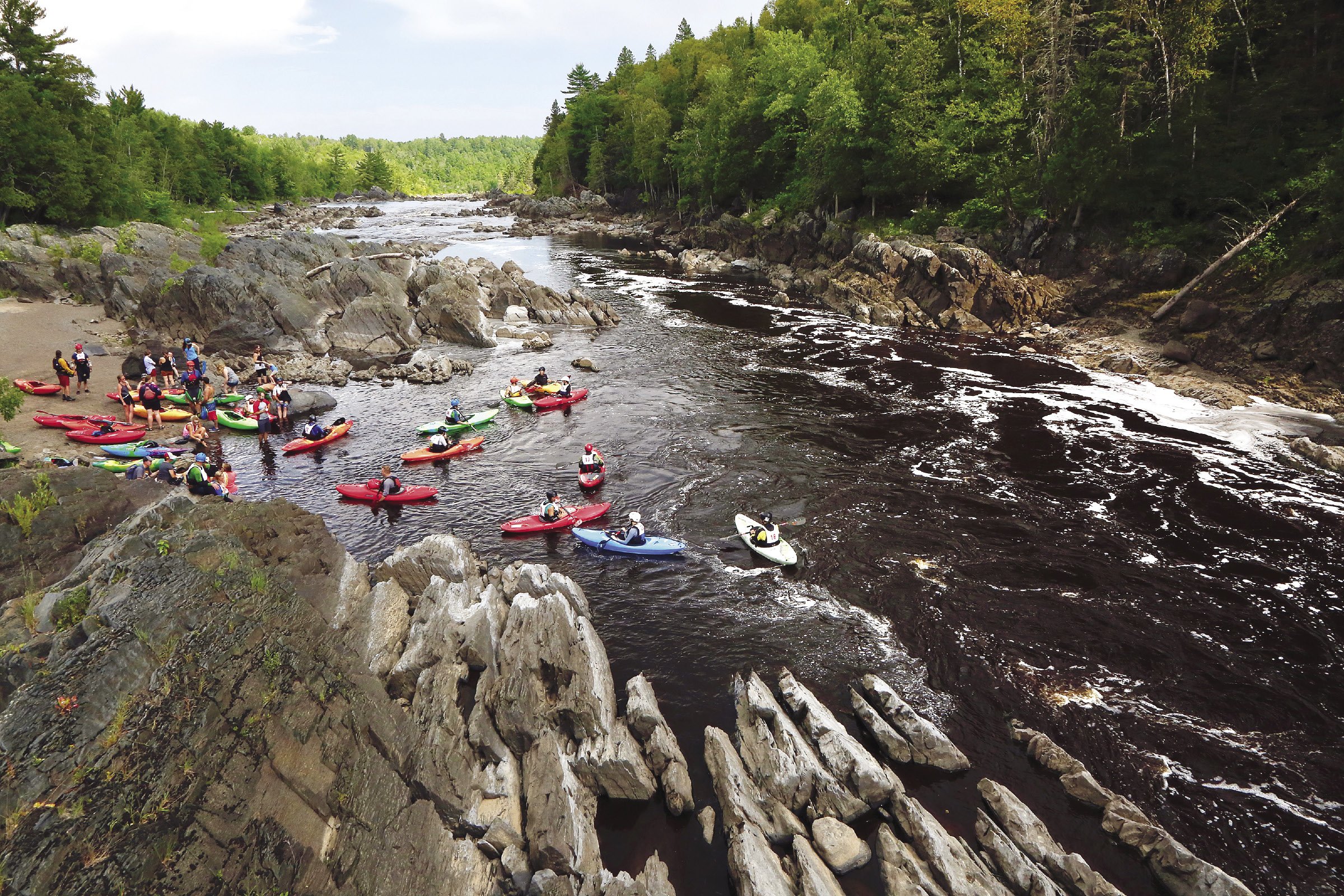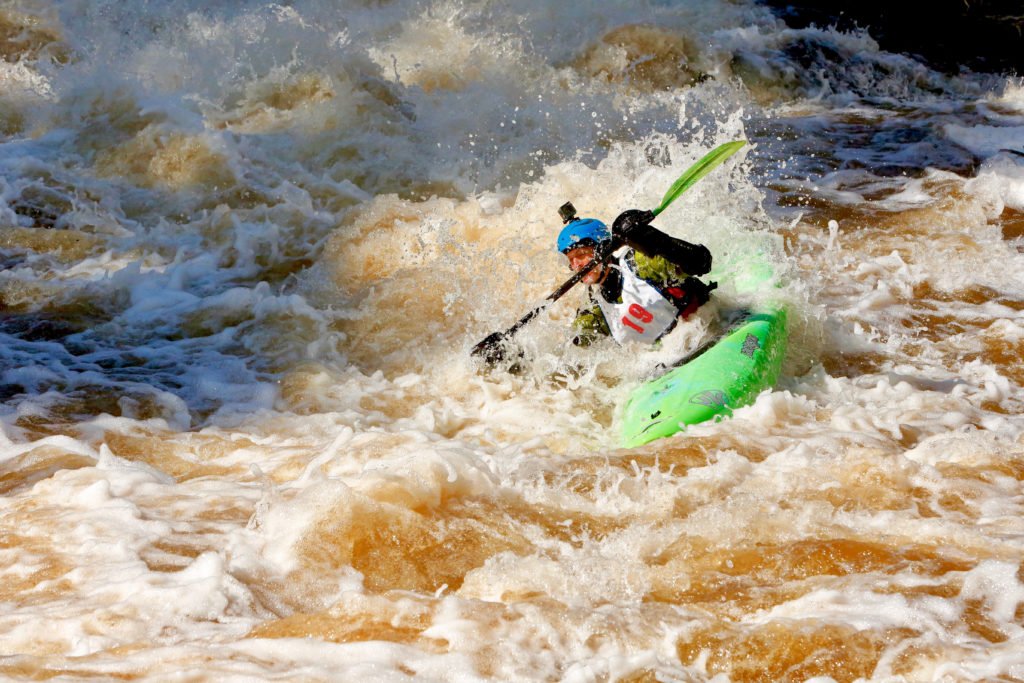World-class whitewater brings experienced paddlers to Lake Superior tributaries
As weary ice anglers put away their augers, tips-ups and sleds to wind down another season chasing fish, Brian Pfeifer knows his favorite time of the year is getting close.
It’s not the run of steelhead or the call of a canoe trip to the Boundary Waters that grips his attention. Each spring when the ice and snow melt away on the many rivers and lakes feeding into Lake Superior, Pfeifer prepares for his favorite means of outdoor recreation on the North Shore: whitewater kayaking.
“It’s the best,” he says.
Whitewater kayaking is far from a new concept on the many rivers that spill into Lake Superior between Duluth and Thunder Bay. Paddlers have been braving these waters for many decades, each spring focusing their attention on the many gurgling, frothy and root-beer colored rapids common across the region. And while there’s no shortage of water, Pfeifer says when it comes to participation, there are only so many qualified or even interested paddlers who come to be a part of the spring runoff on these rivers. Rapids consistently range between Class IV and V, meaning experienced paddlers are the only ones who should pursue these seasonal runs, Pfeifer said.
“These rivers and creeks are narrow and fast,” he says. “They can be dangerous.”
Pfeifer is the co-owner of Swiftwater Adventures based in Carlton, Minn. The company is willing to teach people how to kayak, though only in a controlled environment or a body of water with minimal rapids, at least for beginners. Most of Swiftwaters trips focus on rafting adventures in northern Minnesota, including the popular St. Louis River. When it comes to kayaking on the North Shore, however, Pfeifer is more than willing to set down his guiding hat and put on his paddling helmet.
“People get hooked on this, absolutely,” he says of kayaking whitewater rapids and high-water runoffs.
Much like steelhead fishing, there is a short window where running these rivers in a kayak is at its peak, or, perhaps, even an option. Later in the season, for example, some of the flows are too low and slow to float with any type of consistency. Depending on snowpack and spring temperatures, the average season for peak whitewater can last anywhere from a few weeks to more than a month. This happens most often in the spring, though occasionally heavy autumn rains will allow for paddling opportunities.
The heavy snowfall in 2020 throughout most of the Northern Wilds means this spring could be especially ripe for a tremendous season, Pfeifer said. As with all things wild and untamed, factors beyond human control shape the quality and length of spring runoff on rivers such as the Lester, Baptism and Cascade.

“Those are all good spots and popular spots within this small community of paddlers,” Pfeifer says.
It takes an advanced skill level to safely run these Lake-Superior-bound rivers and creeks during high water and spring runoff. Only dedicated paddlers descend on the area each year. However, it’s the numbers game that also makes this community close knit. Each spring, paddlers connect to run these rapids, some traveling from the Twin Cities, others from much farther. Camps are shared, most often on beaches near Silver Bay or Duluth. The day’s river runs are rehashed through vivid campfire storytelling. Plans are formed for the next day. Friendships are made.
Among those who feel the seasonal tug to make it to northeastern Minnesota each spring is Chris Baer, a well-known and highly respected member of the kayaking scene in North America. Pfeifer says when other paddlers, particularly those just getting into the sport, see someone of Baer’s stature in the paddling community getting a thrill from the rivers on the North Shore, it solidifies the validity of the kayaking scene here. Though paddling ‘celebrities’ such as Baer are a positive sign for the future of the North Shore whitewater kayaking culture, Pfeifer points out that, at least for now, the scene is mostly male dominated.
“Some of the best and most skilled paddlers in the world are women,” Pfeifer says. “I think one thing we’ll be seeing soon are more women getting in on what’s happening on these
rivers near Duluth and up and down the shore.”
As it is, each spring the North Shore is much more heavily populated by steelhead anglers and sightseers looking to view the many waterfalls in the region than it is by kayakers. Pfeifer—who says new paddlers show up on an almost annual basis to the North Shore to test the waters—has been a whitewater kayaker for about a decade, spending two of those years in the Pacific Northwest kayaking some of the most recognized whitewater in the country. He says the whitewater on rivers near Lake Superior are not as well-known as are other spots in the country, including Colorado, California and some select pockets on the East Coast, namely in North Carolina. Many of the rivers flowing into Lake Superior would be considered creeks out West because they are so narrow and the comparatively low volume of water they carry. All the same, Pfeifer says he is a grateful participant in the North Shore paddling scene, particularly because it’s in his home state.
“I grew up on a lake in northern Minnesota,” Pfeifer says. “The water and wilderness have been an integral part of my life since I was young.”
The waterways between Duluth and the Ontario border that drop toward Lake Superior slice and drop through rugged country at a rapid pace. Because of this sharp descent, most of the paddling opportunities on North Shore rivers range between two to five miles before they end at or near Lake Superior. These stretches of water are short runs by industry standards, though what they lack in distance is more than made up for with absolute intensity.
“This is world-class whitewater we have here in Minnesota,” Pfeifer says. “It’s another of our hidden gems.”

